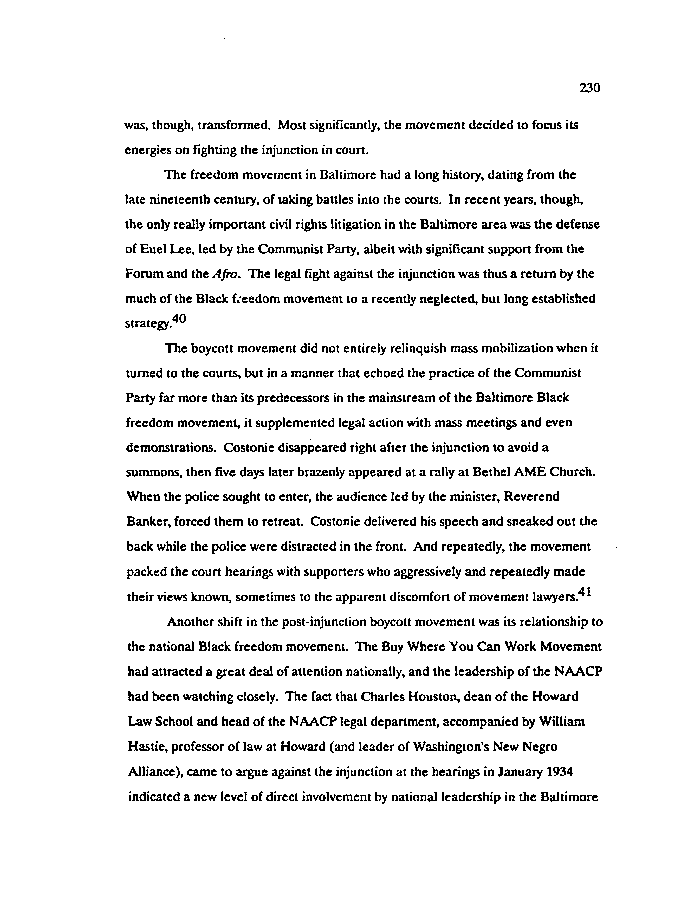|
230
was, though, transformed. Most significantly, the movement decided to focus its
energies on fighting the injunction in court.
The freedom movement in Baltimore had a long history, dating from the
late nineteenth century, of taking battles into the courts. In recent years, though,
the only really important civil rights litigation in the Baltimore area was the defense
of Euel Lee, led by the Communist Party, albeit with significant support from the
Forum and the Afro. The legal fight against the injunction was thus a return by the
much of the Black freedom movement to a recently neglected, but long established
strategy.40
The boycott movement did not entirely relinquish mass mobilization when it
turned to the courts, but in a manner that echoed the practice of the Communist
Party far more than its predecessors in the mainstream of the Baltimore Black
freedom movement, it supplemented legal action with mass meetings and even
demonstrations. Costonie disappeared right after the injunction to avoid a
summons, then five days later brazenly appeared at a rally at Bethel AME Church.
When the police sought to enter, the audience led by the minister, Reverend
Banker, forced them to retreat. Costonie delivered his speech and sneaked out the
back while the police were distracted in the front. And repeatedly, the movement
packed the court hearings with supporters who aggressively and repeatedly made
their views known, sometimes to the apparent discomfort of movement lawyers.
Another shift in the post-injunction boycott movement was its relationship to
the national Black freedom movement. The Buy Where You Can Work Movement
had attracted a great deal of attention nationally, and the leadership of the NAACP
had been watching closely. The fact that Charles Houston, dean of the Howard
Law School and head of the NAACP legal department, accompanied by William
Hastie, professor of law at Howard (and leader of Washington's New Negro
Alliance), came to argue against the injunction at the hearings in January 1934
indicated a new level of direct involvement by national leadership in the Baltimore
|

